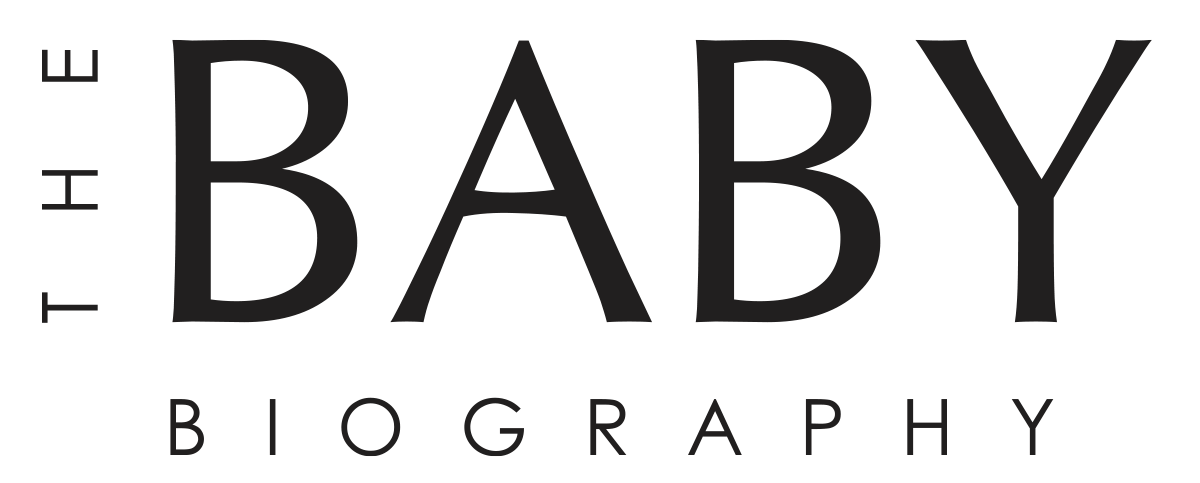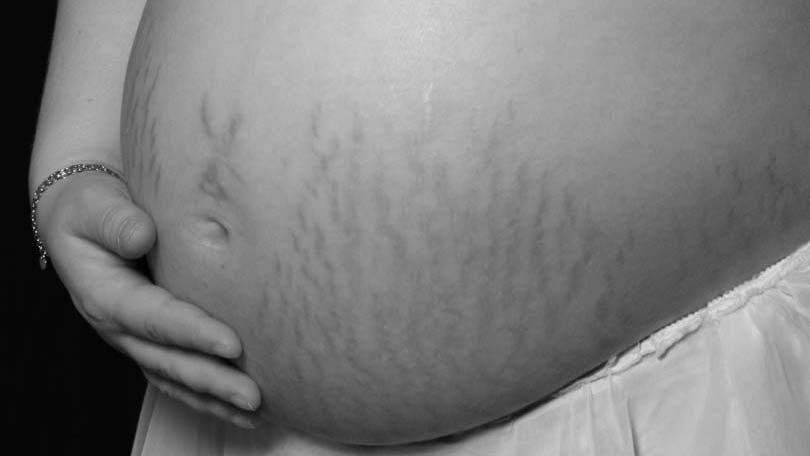All you need to know about pregnancy Stretch Marks
Becoming a mother is an extraordinary journey, filled with anticipation, wonder, and a kaleidoscope of emotions. It’s a time when you create a bond with your unborn child that is unlike any other, a period marked by both joy and introspection. While the path to motherhood is filled with incredible moments, it also comes with physical transformations, one of which is the possibility of pregnancy stretch marks.
Stretch marks, often known as “tiger stripes” or “mommy marks,” are small lines or streaks that can appear on your skin as your body accommodates the growth of your precious baby. These marks, while completely natural, can raise questions and evoke feelings of curiosity, concern, or even self-consciousness among expectant and new mothers.
Welcome to our guide with everything you need to know about pregnancy stretch marks! We’re here to help you understand everything and make you feel more confident during your journey into motherhood. In this guide, we’ve gathered lots of useful information on concerns like why stretch marks happen and how to prevent or treat them.
Together, we’ll have a look at what causes stretch marks and learn how to take care of your changing body. Our goal is to give you the knowledge and confidence to handle pregnancy stretch marks with ease.
So, let’s dive in and discover more about these natural marks on your skin as you nurture new life inside you.
What are stretch marks?
Stretch marks, known as striae in the Medical Term, are like little scars on your skin that look like lines. They appear when the skin stretches or shrinks. They look like long, thin lines and often start as red or purple before fading to silvery-white.

Source: www.metropolisindia.com
Here’s why they appear:
- Pregnancy: One of the most common reasons for stretch marks is pregnancy. As the baby grows, the skin on the abdomen stretches rapidly, causing stretch marks to form.
- Rapid Weight Gain or Loss: Sudden changes in body weight, whether due to weight gain or loss, can lead to the development of stretch marks. The skin may not have enough time to adapt to the changing size.
- Puberty: During puberty, teenagers often go through growth spurts that can lead to skin stretching and the development of stretch marks.
- Medications: Prolonged or high-dose use of corticosteroid medications (Steroids), whether creams or oral medications, can reduce the skin’s elasticity and lead to the development of stretch marks.
- Genetics: If stretch marks run in your family, you might have a higher likelihood of developing them too.
- Hormonal Changes: Conditions causing hormonal imbalances, certain medical conditions, can affect the skin’s elasticity which can result in developing stretch marks.
Here’s how they form:
Stretch marks happen when your skin’s middle layer, called the dermis, stretches too much. This stretching makes the connective fibers in the dermis break, which creates the streaks you see on the skin’s surface. It can also affect your skin’s ability to make collagen, a protein that keeps your skin elastic. Stretch marks are common and not a health concern, but they can impact how you feel about your skin.
Here’s how you can deal with them:
Stretch marks can be a common concern, but there are steps you can take to manage them. First, it’s important to remember that they are a natural part of life and not harmful to your health.
To make them less noticeable, you can try using special creams or oils designed for stretch marks. These products can help keep your skin moisturized and may reduce their appearance over time. It’s essential to use these consistently and as directed.
Check out the link for products that might help: https://onefinebaby.com.au/baby-hub/10-of-the-best-stretch-mark-creams-in-australia
Maintaining a healthy lifestyle can also make a difference. Drinking plenty of water, eating a balanced diet rich in vitamins and nutrients, and staying physically active can help keep your skin in good condition. These habits can improve your skin’s overall elasticity, making stretch marks less visible.

Source: www.mustela.com
For those who are concerned about the appearance of their stretch marks and want more dramatic results, there are cosmetic treatments available. These treatments, such as laser therapy or microdermabrasion, should be discussed with a dermatologist. They can provide guidance on the most suitable options based on your specific situation.
While you can’t completely get rid of stretch marks, you can try out these steps to manage and reduce their visibility. It’s always best to consult a dermatologist for expert advice on how you can deal with them.
Here’s a Q&A guide with some commonly asked questions and answers to help you clarify all your doubts.
Q: I’m expecting my first baby, and I’ve heard about stretch marks. Are there any ways to prevent or reduce them during pregnancy?
A: While there’s no guaranteed way to completely get rid of stretch marks, there are steps you can take to reduce their appearance. Keeping your skin well-hydrated with a quality moisturizer or stretch mark cream, balancing a healthy diet rich in vitamins and nutrients, and gaining weight at a steady pace can help. It’s also important to stay well-hydrated by drinking plenty of water. Genetics play a role, so some women may be more prone to stretch marks than others.
Q: I’ve already developed stretch marks during my pregnancy. Is there anything I can do to make them less noticeable?
A: Absolutely! There are treatments that may help reduce the visibility of stretch marks. These include topical creams or oils with ingredients like retinoids, hyaluronic acid, or vitamin E. Laser therapy and microdermabrasion performed by dermatologists can also be effective. However, it’s essential to consult with a healthcare professional before starting any treatment, especially during pregnancy or while breastfeeding.
Q: How long does it take for stretch marks to fade after giving birth?
A: The fading process can vary from person to person. Some stretch marks may fade significantly within a few months, while others may take several years. Over time, they usually become lighter in color and less noticeable. Continued moisturizing and skincare can help with the process.
Q: Can I use natural remedies like coconut oil or shea butter to prevent stretch marks?
A: Yes, many women find natural remedies like coconut oil, shea butter, or oils (Almond oil) helpful for keeping the skin hydrated and reducing the appearance of stretch marks. These can be a safe and cost-effective option. However, individual results may vary, so it’s important to choose products that work best for your skin and preferences.
Q: Are there any warning signs that I should look out for regarding my stretch marks? When should I seek medical advice?
A: While stretch marks themselves are harmless, there are rare instances where they can be a sign of an underlying medical condition. If you notice unusual changes,, such as extreme pain, redness, or inflammation, or if they suddenly appear without pregnancy or weight changes, it’s best to consult a healthcare professional to rule out any underlying issues.
Q: I’ve heard about stretch mark creams and oils. Do they really work, and are they safe during pregnancy?
A: Many stretch mark creams and oils can help keep your skin hydrated and potentially reduce the visibility of stretch marks. It’s essential to choose products that are safe during pregnancy and breastfeeding, as some ingredients may not be suitable. Always check with your healthcare provider before using any specific product during pregnancy to ensure it’s safe for you and your baby.
Q: Is it normal to get stretch marks on my breasts during pregnancy?
A: Yes, it’s entirely normal for stretch marks to develop on your breasts during pregnancy. As the breasts grow and prepare for breastfeeding, the skin can stretch and form stretch marks. The same preventative and treatment methods that apply to stretch marks on other parts of the body can be used on the breasts as well.
Q: I’ve given birth, but my stretch marks still bother me. Are there any cosmetic procedures to consider for more dramatic results?
A: Yes, there are several cosmetic procedures that can provide more dramatic results in reducing the visibility of stretch marks. These include laser therapy, microdermabrasion, chemical peels, and fractional laser treatments. However, these procedures should be performed by trained professionals and may require multiple sessions. Always consult with a dermatologist or plastic surgeon to discuss your options and potential risks.
Q: Can I continue using stretch mark creams while breastfeeding?
A: Many stretch mark creams are safe to use while breastfeeding, but it’s crucial to double-check the ingredients and consult with your healthcare provider if you have any concerns. Generally, products that do not contain retinoids or other potentially harmful substances should be safe for both you and your baby.
Q: I’ve heard that losing weight can make stretch marks more noticeable. Is this true, and what can I do about it?
A: It’s possible that losing a significant amount of weight can make stretch marks more noticeable due to changes in skin elasticity. However, maintaining a healthy weight loss pace and staying hydrated can help reduce this effect. Over time, as your skin adjusts to the new weight, stretch marks may become less visible. If they still bother you, consider consulting a dermatologist for potential treatments.
Q: Are stretch marks permanent, or can they eventually disappear on their own?
A: Stretch marks are typically permanent, but they often become less noticeable over time. With proper care and treatments, they may fade significantly. However, they may never completely disappear, and their visibility can vary from person to person.
Q: Do genetics play a role in the likelihood of getting stretch marks?
A: Yes, genetics can influence whether you are more or less prone to developing stretch marks. If your parents or close family members had them during pregnancy or periods of rapid growth, you may be more likely to experience them as well.
Q: Can men get stretch marks too, or is it primarily a concern for women during pregnancy?
A: While stretch marks are more commonly associated with pregnancy, men can also develop them. They may occur during growth spurts, weight gain or loss, or muscle-building efforts. The causes of stretch marks can affect both genders.
Q: What role does skin type and color play in the visibility of stretch marks?
A: The visibility of stretch marks can be influenced by skin type and color. In general, stretch marks may be less noticeable on darker skin tones. However, they can still appear and affect individuals of all skin types and colors. Proper skincare and treatments can help manage their appearance.
Q: Can I prevent stretch marks completely, or are they inevitable during certain life changes?
A: While it’s challenging to prevent stretch marks entirely, you can take steps to reduce their appearance. Keeping your skin well-hydrated, maintaining a healthy lifestyle, and using specialized creams or oils can help reduce their severity. However, factors like genetics and the rate of skin stretching during pregnancy or growth may make them difficult to completely avoid.
Remember, your body’s changes are a natural part of life and Stretch marks are a reminder of the incredible changes our bodies go through during various stages of life, whether it’s pregnancy, growth, or other factors. Instead of viewing them negatively, let’s embrace them as a symbol of our strength, resilience, and the beautiful journeys we’ve undertaken.
You are not alone in experiencing them, and there are ways to manage and reduce their visibility if that’s your preference. Ultimately, your worth and beauty go far beyond your skin, and confidence comes from self-acceptance and self-love.
Embrace your body, embrace yourself, and celebrate the unique story that your stretch marks tell. You are beautiful just the way you are, and it’s important to feel comfortable and confident in your own skin.







